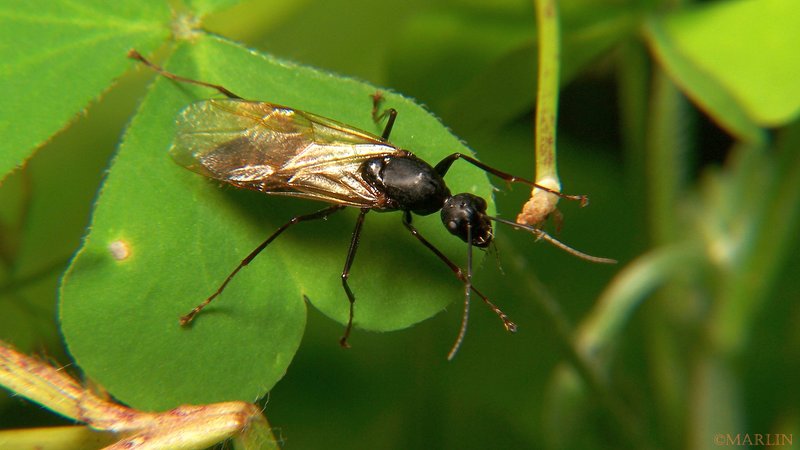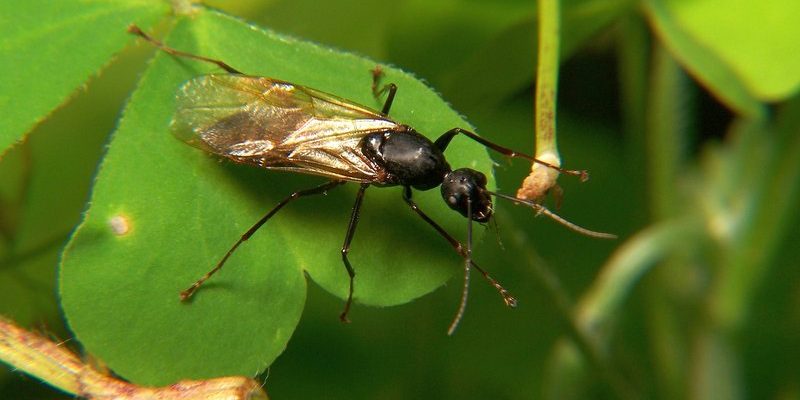
Introduction to Carpenter Ants
You might know that ants are busy little creatures, but carpenter ants take industriousness to a whole new level. These remarkable insects not only help maintain the ecosystem but also have a knack for woodworking—you read that right! They tunnel through wood to create nests, which can sometimes be a problem for homeowners. Imagine a tiny, organized construction crew working away inside the walls of your house. A bit unsettling, isn’t it? But there’s much more to these little architects than just nibbling on lumber.
Carpenter ants are fascinating not merely because of their nesting habits, but also due to their complex social structure and behavior. With various roles in their colonies, from the queen to the worker ants, they showcase teamwork in its finest form. In this article, we will explore everything you need to know about carpenter ants—from their anatomy and behavior to how they impact our lives and how we can manage these creatures in our homes.
What Are Carpenter Ants?
Carpenter ants belong to the family Formicidae and are commonly identified by their large size and distinctive black or reddish coloration. They can grow anywhere from 1/4 to 1 inch in length, making them one of the largest species of ants. They have a segmented body with a narrow waist and long legs that allow them to move swiftly. Like many insects, carpenter ants have a head equipped with powerful mandibles, which they use to chew through wood.
Their nests are typically found in decaying or damp wood, but they can also inhabit healthy wood if other factors are right. What sets carpenter ants apart from other ant species is their unique tunneling behavior. They don’t eat wood like termites do; instead, they remove it to create smooth tunnels and chambers for their colonies. You can think of it as home renovation—just on a much smaller scale!
Carpenter Ant Diet and Foraging
Carpenter ants are omnivorous, which means they eat a variety of foods. Their diet includes proteins, sugars, and fats, making them quite adaptable when it comes to food sources. You might find them raiding your picnic leftovers or feasting on honeydew produced by aphids. They love to gather sugary substances, which provide them energy, while protein is essential for nurturing their young.
Foraging is an essential part of their daily life. Carpenter ants have unique foraging behaviors, often working in teams to gather food. They communicate through pheromones, leaving scented trails for others to follow. If you’ve ever seen ants marching in a line, that’s simply them working smart! They can also recognize food sources through sight and touch, making them efficient at seeking out sustenance.
Life Cycle of Carpenter Ants
The life cycle of carpenter ants can be broken down into four stages: egg, larva, pupa, and adult. The journey begins when the queen lays eggs in a suitable nest. After about 2 weeks, the eggs hatch into larvae, which are fed by the worker ants. As the larvae grow, they undergo a transformation in the pupal stage, which can last from a few weeks to several months, depending on environmental conditions.
Once they emerge as adults, carpenter ants take on specific roles in the colony. Most are workers that maintain the nest and gather food, while a few become reproductive members—the queens and males. It’s fascinating how these tiny insects work together seamlessly to ensure the survival and growth of the colony!
Identifying Carpenter Ants
Knowing how to identify carpenter ants can save you a lot of trouble if they ever invade your home. Here are some key features to look for:
| Feature | Description |
| Color | Typically black or reddish-brown; some species appear lighter. |
| Size | Ranges from 1/4 to 1 inch, depending on the species. |
| Body Structure | Segmented body, with a noticeable narrow waist and large mandibles. |
| Wings | Reproductive individuals have wings and are often seen during mating season in spring. |
When trying to identify carpenter ants, pay attention to their behavior as well. Unlike other ants that may be less active, carpenter ants are often seen wandering about, especially during warmer months. If you notice these ants and their characteristics near your wood structures, it may be time to investigate further!
The Impact of Carpenter Ants on Homes
Carpenter ants can create significant issues in homes, especially if they decide to take up residence in the wooden structures. Their tunneling habits can weaken beams, siding, or even furniture, leading to costly repairs. It’s important to remember that while they don’t eat wood like termites, they can still cause extensive damage over time.
Preventing carpenter ant infestations begins with good home maintenance. Keep wood piles away from the house, fix leaks promptly, and ensure proper ventilation in your attic. If you notice signs of carpenter ants, like sawdust or small holes in wood, don’t hesitate to call a pest control professional. They can help identify the colony’s nest and implement effective treatment strategies.
Natural Predators of Carpenter Ants
While carpenter ants are skilled builders, they are not without their predators. Various animals prey on them, helping to keep their populations in check. Birds, frogs, and various insects, such as spiders and wasps, are common natural predators.
One interesting fact is that some larger ants will even hunt carpenter ants. For example, the red imported fire ant has been known to attack carpenter ants when food is scarce. This competitive dynamic in nature helps maintain a balance within ecosystems and highlights the importance of each species, including carpenter ants.
Interesting Facts About Carpenter Ants
Carpenter ants are full of surprises, and here are some intriguing tidbits that you might find fascinating:
- Carpenter ants are incredibly social creatures, often forming colonies with thousands of individuals.
- Some species of carpenter ants can live up to 30 years, which is quite long for an insect!
- They can be found in various environments, from forests to urban areas, showcasing their adaptability.
- Carpenter ants have excellent vision and can see in color, which is rare for insects.
These little architects are remarkable in how they interact with their environment and their fellow ants. Their social structure and behavior can give us insight into the natural world and inspire wonder about these small yet dynamic creatures.
How to Manage Carpenter Ants
Managing carpenter ants requires a combination of prevention and intervention. Here are some steps you can take:
1. Inspection: Regularly check your home for signs of carpenter ants. Look for holes in wood, sawdust trails, or the ants themselves.
2. Eliminate Sugar Sources: Since they love sugary foods, make sure to clean up food spills and store food in sealed containers.
3. Remove Moisture: Fix any leaks or areas with standing water, as carpenter ants are attracted to moist environments.
4. Professional Help: If you find a colony, consider contacting pest control. They can provide effective treatments to eliminate the problem.
Being proactive about potential infestations can go a long way in keeping your home safe from these industrious little insects.
FAQ
What is the difference between carpenter ants and termites?
Carpenter ants and termites are often confused, but they have key differences. Carpenter ants do not eat wood; instead, they tunnel through it to create their nests. Termites, on the other hand, consume wood, leading to more destructive damage. Additionally, carpenter ants have a segmented body with a narrow waist and larger mandibles, while termites have a more uniform body shape.
What attracts carpenter ants to my home?
Carpenter ants are drawn to homes that provide suitable nesting sites and food sources. Moist wood, such as that found in leaky roofs or poorly ventilated attics, is particularly appealing. They are also attracted to sugary foods, so having unsealed food items around can tempt them to invade your space.
How do I identify a carpenter ant nest?
A carpenter ant nest is typically located in or near moist or rotting wood, but they can also inhabit sound wood. Look for sawdust-like material, which is actually wood shavings, around the nest entrance. You might also find worker ants traveling to and from the nest, which can help you pinpoint its location.
Can carpenter ants cause structural damage to my home?
Yes, carpenter ants can cause structural damage over time. While they don’t eat wood, their tunneling can weaken beams, flooring, and other wooden structures. If not managed, the damage can escalate, leading to costly repairs.
Do carpenter ants bite?
Carpenter ants can bite, but they rarely do unless threatened. When they do bite, it’s typically to defend their nest, and the bite is not harmful to humans. However, they can also spray formic acid, which may cause a mild irritation.
How can I prevent carpenter ants from entering my home?
Preventing carpenter ants involves good home maintenance. Seal cracks and openings around windows and doors, remove moisture sources, and reduce wood-to-soil contact. Additionally, keep food sealed and clean up any spills promptly to eliminate potential food sources.
Are carpenter ants harmful to pets?
Generally, carpenter ants are not harmful to pets unless ingested in large quantities. However, it’s always wise to monitor what your pets might munch on, as some other insects could be more dangerous.
What time of year do carpenter ants become most active?
Carpenter ants are most active in the spring and summer months. During this time, they forage for food and mate, which can lead to increased visibility. You may notice more activity around your home as they search for food and nesting sites.
How long do carpenter ants live?
The lifespan of carpenter ants can vary but typically ranges from 3 to 6 years for workers. However, the queen can live significantly longer, sometimes up to 30 years, depending on environmental conditions.
Can I get rid of carpenter ants naturally?
Yes, there are natural methods to deter carpenter ants. Mixing equal parts of sugar and borax can create a homemade bait that attracts and eliminates them. Additionally, diatomaceous earth can be sprinkled around potential entry points, as it acts as a dehydrating agent for ants.
What should I do if I find a carpenter ant infestation?
If you discover an infestation, it’s crucial to take immediate action. Start by locating their nest and assessing the extent of the problem. You can use baits or traps to help reduce their numbers. However, for larger infestations, contacting a pest control professional may be the best option for thorough eradication.
Do carpenter ants have any ecological benefits?
Absolutely! Carpenter ants play an essential role in breaking down dead trees and recycling nutrients back into the soil. They also serve as food for various predators, contributing to the balance of ecosystems. Their activity can help promote forest health and biodiversity.

